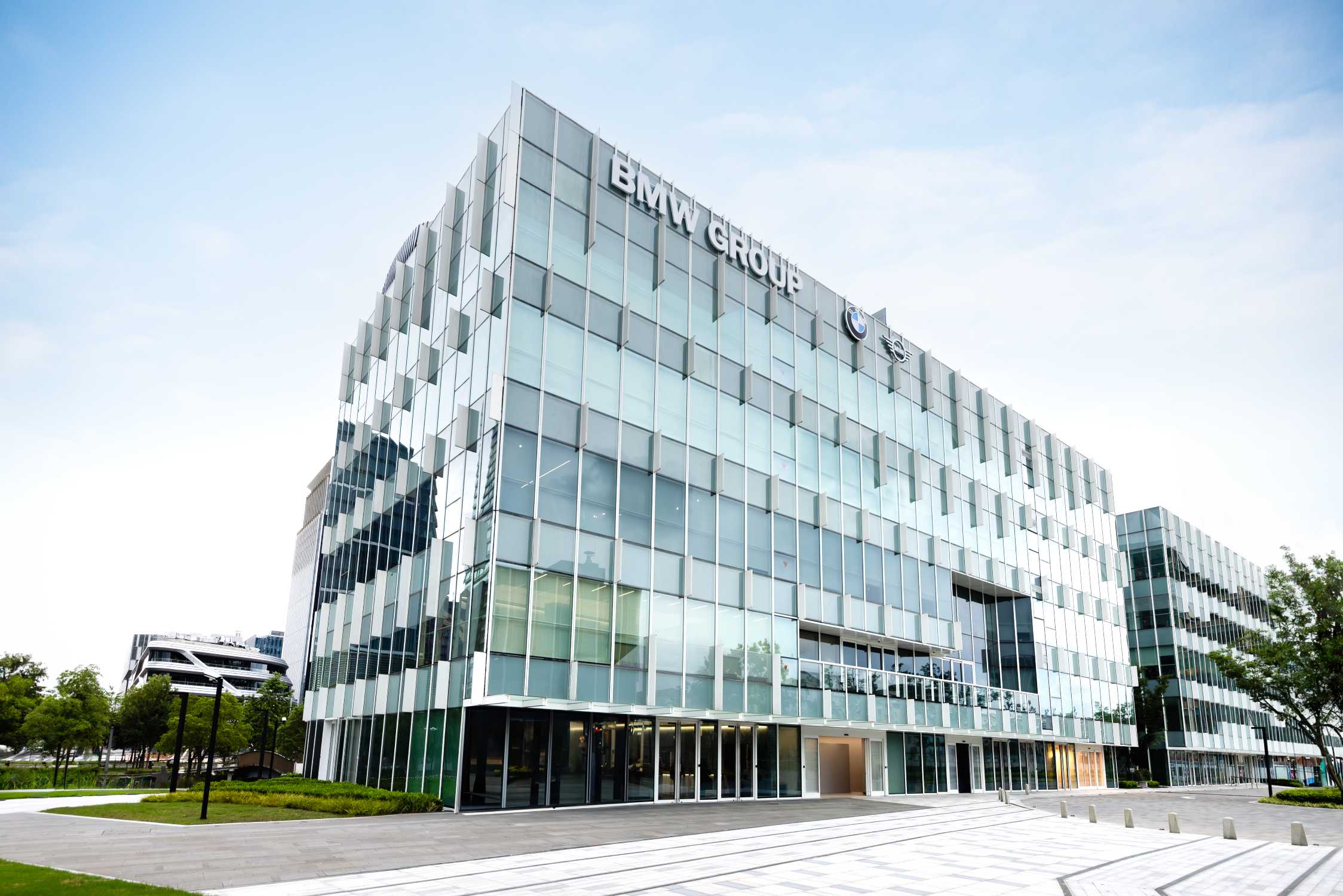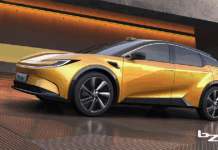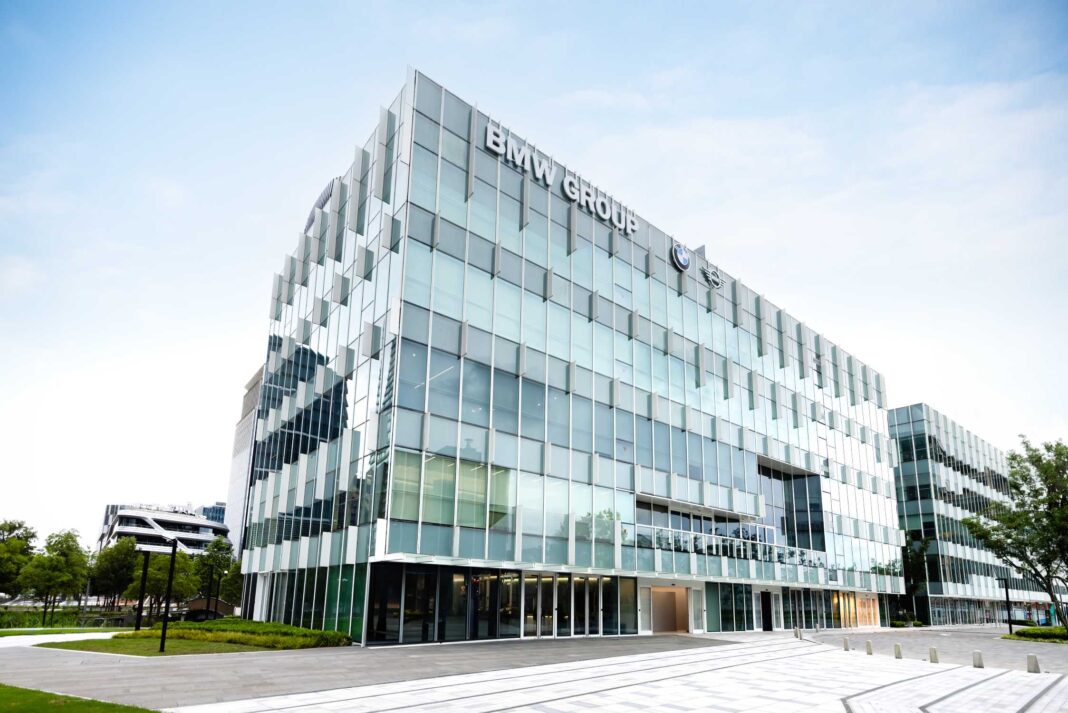
Shanghai. On July 18, 2023, the BMW Group further
expanded its R&D footprint in China with the opening of a new
R&D Center in Shanghai. China is already home to BMW Group’s
largest R&D system outside of Germany, with locations in Beijing,
Shanghai, Shenyang and Nanjing. Based on the concept of open
innovation, all BMW’s R&D functions in China have been merged
together under one roof for efficient collaboration and high-speed
performance. BMW has now
built-up fully-fledged R&D competency and software
development capabilities for full-stack ICV development in China,
putting the company in the perfect position to further implementing
its China strategy.
Mr. Frank Weber, Member of the Board of Management of BMW AG,
Development, said, “The NEUE KLASSE of BMW will redefine
driving pleasure. With our fascinating products and premium mobility
experience, the BMW Group moves body, heart and mind empowered by
digitalisation. Our new R&D Center and BMW China
R&D upgrade will enable us to achieve a real competence push.
Within the last three years, we have tripled our forces in China.
Today, more than 3,200 designers and engineers, NEV and software
specialists are creating leading-edge innovations in close
collaboration with Chinese tech players, start-ups, local partners as
well as academia. China is the place to be. Going forward, there will
be a lot more China in our worldwide R&D organisation.”
A future-oriented R&D strategy and innovation mindset has been
central to the BMW Group’s rise to its leadership position in the
global automotive industry. The company opened FIZ, its renowned
R&D Center in Munich in 1990. Today, the BMW Group R&D network
covers 17 countries. China has established the largest R&D and
innovation network outside Germany, with facilities and processes as
advanced as the headquarters and numerous innovation partnerships.
BMW believes that China is the place to be for future mobility. In
April, BMW further upgraded its R&D management in China, bringing
all development functions in China under one roof and the leadership
of Dr. Robert Kahlenberg. This move not only strengthens the synergy
across different R&D functions in China, but will better integrate
the China R&D network and its innovation capabilities into BMW
Group’s worldwide R&D organization. In addition, innovation and
future trends will be scouted and assessed earlier in order to better
meet the needs of Chinese customers. Within BMW Group’s global R&D
network, China is the only country outside Germany with full-process
R&D capabilities. There are now 3,200 R&D associates in China
using their expertise to develop fascinating products for Chinese
customers. For instance, in the BMW Operating System 9, 70% of the
functions are tailor-made for Chinese customers. What’s more, BMW’s
China R&D team has been deeply involved in the design,
development, testing and validation of the locally-produced
all-electric BMW i5.
The NEUE KLASSE, BMW’s next generation of all-electric models, will
write a whole new book in terms of technological development.
BMW’s R&D and design teams in China are deeply involved
in many key aspects of the development of the NEUE KLASSE models.
A number of China innovations will become highlights of the
upcoming NEUE KLASSE models.
By focusing on human-machine interaction and hardware-software
integration, BMW is taking the digital user experience to the
next-level in China.
Human-machine interaction is a vital part of the user
experience. Currently, China is the only market outside Germany that
has Skylab, the human-machine interaction design team, and usability
lab with all core design functions, covering user
experience design, visual design, usability research and the
development of human-machine interaction. The facility fully
demonstrates BMW’s systematic, precise and advanced approach to
usability research based on simulation models. The usability research
team consists of designers, software engineers, cognitive
psychologists, and more. The specific team conducting usability
research during the development of the BMW Operating System 9 included
experts with over eight years of experience on average, including some
with psychology PhDs. Over a 15-month period, they listened to
feedback from hundreds of Chinese customers and customers from other
countries and regions.
BMW places a lot of emphasis on the importance of hardware-software
integration in car development, with leading-edge software considered
essential for a next-level user experience. In China, BA
TechWorks in Nanjing will expand their software team to 500
associates by the end of 2023, with software development
capabilities for full stack development of Intelligent Connected
Vehicles. BMW’s software development department was established in
2002 and now located in Mountain View (USA), Lisbon and Porto
(Portugal), Munich and Ulm (Germany), Tokyo (Japan) and Shanghai,
Beijing and Nanjing (China), with over 8,000 software specialists
worldwide. The team develops an average of around 100,000 software
builds per day and processes around 3,000 builds per hour in parallel.
Designworks Shanghai as local
design studio of BMW Group even deeper integrated in R&D centre
to bridge the East and the West
In 2023, Designworks started its second decade in China and
will further integrate with BMW’s world-leading digital development
processes based on LED and VR technology, to empower future design
through digitalization. The studio space and its
technological features greatly improve the effectiveness of the design
team, their workflow and global
collaboration. More than 25 years ago BMW AG acquired Designworks to
serve as the eyes and ears of the BMW Group to the world. Designworks
started its operation in Shanghai in 2012 and became a bridge between
Western and Chinese aesthetics and a leading force in automotive
design. Recently, the design of BMW models worldwide has increasingly
reflected the beauty of Chinese culture and modern Chinese values,
with a bolder, more striking and more confident flair.
BMW has long led the way in advanced digital R&D, building
excellent user experiences for global customers. The BMW Group
Driving Simulation Center located in Munich covers an area
of some 11,400 square metres, and is equipped with 14 simulators with
the capacity of 100 simulations per day. Tests include innovative
entertainment technologies, user interfaces and operating concepts,
multi-mode interaction between users and the vehicle, chassis tuning,
driver assistance functions and even fully-automated driving
scenarios. These tests greatly speed up the development and
significantly reduce the environmental impact during the R&D processes.
From R&D to validation, BMW has built its largest
e-mobility R&D footprint outside of Germany in China
The BMW Group established its first battery center outside of
Germany with full battery capabilities in China in 2017.
The BMW Shenyang R&D Center has been focusing on electrification
technology development, product localization, calibration, and
validation for over 10 years. T
he recently expanded Shenyang R&D Centre Phase II
has further strengthened BMW’s full process development and
validation capabilities for locally-produced new energy vehicles. The
facility includes 19 new laboratories, 17 of which are dedicated to
testing new energy vehicles.
China is also home to BMW’s largest testing and validation
footprint outside of Germany. The Shenyang R&D Centre has
a global-leading EMC laboratory. In the
anti-interference test, the general standard in the industry requires
30 V/m, while the electric field intensity in BMW EMC lab could reach
100V/m on average and up to 140 V/m in extreme test conditions. BMW
also owns a professional NVH laboratory in Shenyang,
including an acoustic hub Dyno laboratory and outdoor test track,
which can run strict tests of noise outside and inside the cabin. The
High-Voltage Battery (HVB) testing lab can simulate
extreme conditions to ensure the high-performance and safety of
high-voltage batteries in all conditions. The high-voltage battery of
the all-new BMW i3 underwent 155 hardware tests and 994 software
function tests during the development process.
All BMW vehicles will undergo rigorous vehicle
testing prior to launch, at geographical locations from 71
degrees north to 25 degrees south latitude, and temperatures from -40
degrees to 46 degrees. The extreme testing ensures all new models will
provide excellent performance for customers whatever the weather and
road condition. In addition, all models launched in China will undergo
vehicle endurance testing in the special
environments of high altitude, high humidity, high temperature and
extreme cold in China. The test contents include the powertrain
system, the battery, the motor, the control units, and the dynamic performance.
Thanks to the fully-fledged BEV R&D and testing capabilities in
China, the BMW Group has already launched locally-produced BEVs
including the BMW i3, BMW iX1 and BMW iX3, as well as imported BEVs
including the BMW i4, BMW i7 and BMW iX. Meanwhile, the locally
produced BMW i5, will be unveiled this year.
In China, for the World: BMW Group Tech Office Asia-Pacific in
Shanghai focuses on tech scouting of advanced technologies and innovations
BMW Group is a strong believer in innovation through collaboration,
and is constantly scouting for global innovators in new technologies
and future mobility trends. In 2013, BMW Group Tech
Office was established in Shanghai. It focuses on the future
mobility pillars of Electric, Digital and Circular. BMW collaborates
with innovative companies and even offers platforms for innovative
start-ups to enter the automotive market with the help of BMW. BMW
Tech Office covers different tech fields like generative AI, AR/VR,
sustainability and digital solutions. 2023 marks the 10th anniversary
of the Tech office, and the center has been upgraded to the BMW Group
Tech Office Asia Pacific, based in China but feeding back innovations
for the world.
BMW is also expanding its circle of joint innovation partners. As
well as cooperating with tech giants such as Tencent, Alibaba, China
Unicom, Navinfo and Huawei, BMW also engages with China’s future tech
innovators and top universities such as Tongji University and Tsinghua
University. Recently, BMW signed a Memorandum of Understanding
with China Automotive Technology & Research Center
(CATARC) for cooperation in the areas of intelligent
connected vehicles, new energy vehicles, sustainability, vehicle
safety, and more. The two parties have agreed to conduct exchanges and
discussions on policy and regulation, promote the standardization in
the framework of an ICV ecosystem, and advance ICV and NEV development
in China together.














